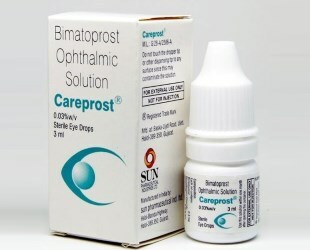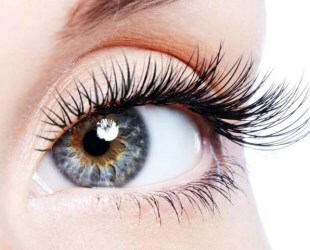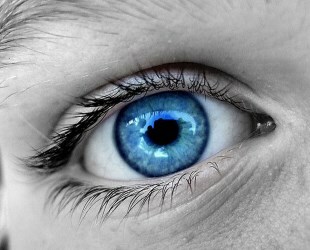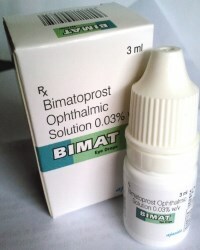
Pharmacological action
Bimatoprost is a synthetic prostamide that is structurally related to prostaglandins F2ά.
An action capable of reducing IOP, this drug consists in a selective imitation of the effect of the proteases, and not binding to the prostaglandins with the receptors.
The mechanism of action of the Bimatoprost drug is not known precisely, because at the present time the receptors are not found in the body.
- 1. Pharmacological action of
- 2. Indications for use
- 3. How to use
- 4. Form of formulation, Composition
- 5. Interaction with various
- preparations 6. Contraindications
- 7. Precautions
- 8. Side effects
- 9. Conditions and periods of storage
- 10. Average cost of the drug in Russia and Ukraine
- 11. Analogues
- 12. Reviews
The effect of a gradual decrease in IOP consists in the uveoscleral outflow of the intraocular fluid, as well as the enhancement fromcurrent passing through the trabecular network.
The effect of this drug begins somewhere in 4 hours immediately after admission, and the maximum reaches after only 8-12 hours. Its total duration is about 24 hours.
The drug Bimatoprost effectively penetrates the sclera and the human cornea. Also, it is not capable of cumulation and after instillation has a fairly low systemic impact.
So, when administered per day once the maximum concentration of it in the blood occurs in about 10 minutes, and decreases to the lowest limit of sensitivity of laboratory methods in just 1.5 hours. With intravenous administration, the elimination half-life is approximately 45 minutes.
Plasma proteins generally bind about 88% of Bimatoprost. All the remaining quantity is in absolutely free form.
Removal of the drug by the kidneys:
- up to 67% excreted in the urine,
- 25% - with feces.
Indications for use

The action of the drug Bimatoprost is not immediately apparent, but for 1-2 months. Remember that the effect can be unstable, and when you stop using it, eyelashes can return to their previous state.
In addition, in some cases, there are differences in the length of old and new eyelashes, thickness, as well as the direction of growth and color intensity.
If, however, you forgot to apply the drug at the time - it does not mean that you need to double the next dose, just continue to apply the drug at the usual time.
Bimatoprost should not be used during pregnancy or breastfeeding, in the absence of clinical trial data.
Drug Bimatoprost is recommended for use with:
- hypotrichosis( insufficient growth) of eyelashes;
- excessive eyelash loss.
How to use
The standard dose is 1 drop once a day( evening) in a sore eye. A significant increase in the frequency of application can reduce the therapeutic effect.
In case when the next dose is missed, the drug should be continued unchanged, i.e. 1 drop per day. In the case of simultaneous reception of Bimatoprost with any other analogues of prostaglandins, it is necessary to control the level of IOP.
Form release, composition
Ophthalmic drops for topical use Bimatoprost 0.03% are produced in a polyethylene bottle with a volume of 3 ml( the kit also contains a special applicator).
The main active substance of this drug: bimatoprost - 0.03 mg / ml.
Additional components are:
- sodium chloride;
- benzalkonium chloride;
- disodium hydrogen phosphate;
- distilled water,
- citric acid.
To adjust the pH add sodium hydroxide or hydrochloric acid. The pH level is 6.8-7.8.
Interaction with various
medications The interaction of Bimatoprost with other drugs is unlikely because of its extremely low concentration in the blood immediately after instillation into the eye.
Based on the results of preclinical studies, this drug is biotransformed in completely different ways, without affecting at all the hepatic enzymes that participate in the metabolism of other drugs.
Numerous studies have shown no interaction with all types of β-blockers in the case of simultaneous application. However, interaction with other antiglaucoma drugs has not yet been studied.
Contraindications

Drug Bimatoprost is contraindicated in the following cases:
- in childhood;
- pregnancy, as well as with breastfeeding;
- with increased sensitivity to the drug Bimatoprost or other components of the drug.
Precautions
Bimatoprost can often cause increased pigmentation of eyelids, irises and eyelashes. Such effects can be manifested due to an increase in the amount of pigment in melanocytes, but this is not accompanied by an increase in the number of the latter.
The specific expression of such manifestations depends solely on the duration of administration. Immediately after stopping Bimatoprost, often the pigmentation of the iris to the original one does not return, and the pigmentation of eyelashes and eyelids can be significantly reduced. Until now, the long-term effects of this effect have not been studied.
There are exceptions when, when discontinuing the drug, reversible is noted: increased growth, number and thickness of eyelashes.
With special care, this drug is prescribed for patients with a fairly active inflammatory intraocular process( for example, uveitis and iritis) because of its amplification.
In addition, there are some data on the recurrence of corneal infiltrates or eye infection during the application of Bimatoprost.
In this case, the most careful monitoring of patients who use this drug is necessary, in the presence of a viral eye injury in the history( for example, the virus of ordinary herpes).
Administration of Bimatoprost in exceptional cases can contribute to the gradual development of so-called macular edema.
This is why doctors do not recommend the use of this drug to patients at risk of developing one of their pathologies:
- diabetic retinopathy,
- damage to posterior capsule due to cataract extraction,
- aphakia.
The effect of Bimatoprost has not been studied to date in the treatment of narrow-angle and occlusive, neovascular, congenital and uveal glaucoma.
With special care, Bimatoprost should be given to patients with both hepatic and renal insufficiency.
The effect of the drug is also not studied in patients with impaired breathing function. But there are some data on the deterioration of bronchial asthma, chronic lung disease and dyspnea.
This group of patients should be given special care with this drug.
With the presence of any intracardiac blockade or heart failure, the safety of the use of Bimatoprost has not yet been evaluated, but there are isolated reports of hypotension and bradycardia in the literature against its background.
In addition, it is recommended with special care to prescribe this drug to patients with a fairly low heart rate, as well as low blood pressure.
Due to the presence of a substance such as benzalkonium chloride with prolonged use of the drug, constant monitoring of the condition of the cornea is mandatory. All this is due to the risk of developing toxic or point ulcerative keratopathy, especially in patients who use contact lenses or with a dry eye syndrome.
The risk of using the drug during pregnancy by the FDA is category C. In an animal study, it was found that the Bimatoprost preparation has a strong teratogenic effect in the case of increases in doses that are significantly higher than the maximum for the human body.
No adequate studies have been conducted on women. Also, the possibility of excretion of a drug, as well as its metabolites in the milk of a nursing mother, has not been studied, but this fact was established in experiments on animals.
It is because of this that the purpose of this drug is possible only if the resultant effect for the mother will exceed the risk of developing any side effects for the child.
The person at the moment has not revealed the influence of Bimatoprost on fertility. In addition, the preparation did not exert any carcinogenic or mutagenic effect in the experiments conducted on animals.
The safety of Bimatoprost in children under 18 years of age has not been evaluated.
Short-term blurred vision or other visual disturbances are also possible. In case of their occurrence it is required to abstain from the management of auto transport.
Side effects of

The most common and most common side effect is conjunctival hyperemia( in 15-40% of cases).
By the third year of the use of the drug, it has progressively begun to decrease to almost complete extinction.
Approximately 0.5-3% of patients believe this is the reason for stopping the drug. Quite often, side effects are severe itching and eyelash growth( about 15-40%).
In 1-10% of all cases, such side effects as
- dryness, pain, burning and irritation in the eye,
- some visual impairment,
- permanent sensation of foreign body in the eye,
- pigmentation of the entire perimacular area,
- cataract,
- blepharitis,
- surface dotted keratitis,
- eyelash blackening,
- periorbital erythema,
- allergic conjunctivitis,
- discharge from the eye,
- photophobia,
- lacrimation,
- astenopia,
- hypysfagma,
- enhancement of pigmenttion iris,
- conjunctival edema,
- abnormal hair growth.
In rare cases, it is possible to irit( intraocular inflammation).
Of all systemic side effects, infection and upper respiratory tract infection are most common( about 10%).There are also exceptions when patients complain of increased liver enzymes, headaches, and asthenic conditions.
Terms and Conditions of storage
Stored at 2-25 ° C, always in a place protected from children.
The average cost of the drug in Russia and Ukraine
The average cost of the drug Bimatoprost in Russia is 800 rubles, and in Ukraine - 180 hryvnia.
Analogues

Excellent analogs of the drug Bimatoprost are such drugs as:
- Kareprost-average cost of 345 rubles;
- Bimat - the average cost of 208 rubles;
- Lumigan - the average cost of 760 rubles;
- Xlash - the average cost of 1020 rubles.
Reviews
It can be concluded from numerous reviews that Bimatoprost is one of the fastest and most effective medicines.
It really helps to restore your eyelashes or give them a luxurious volume for 3 months, without causing any harm. Patients' opinions can be read at the end of this article.
